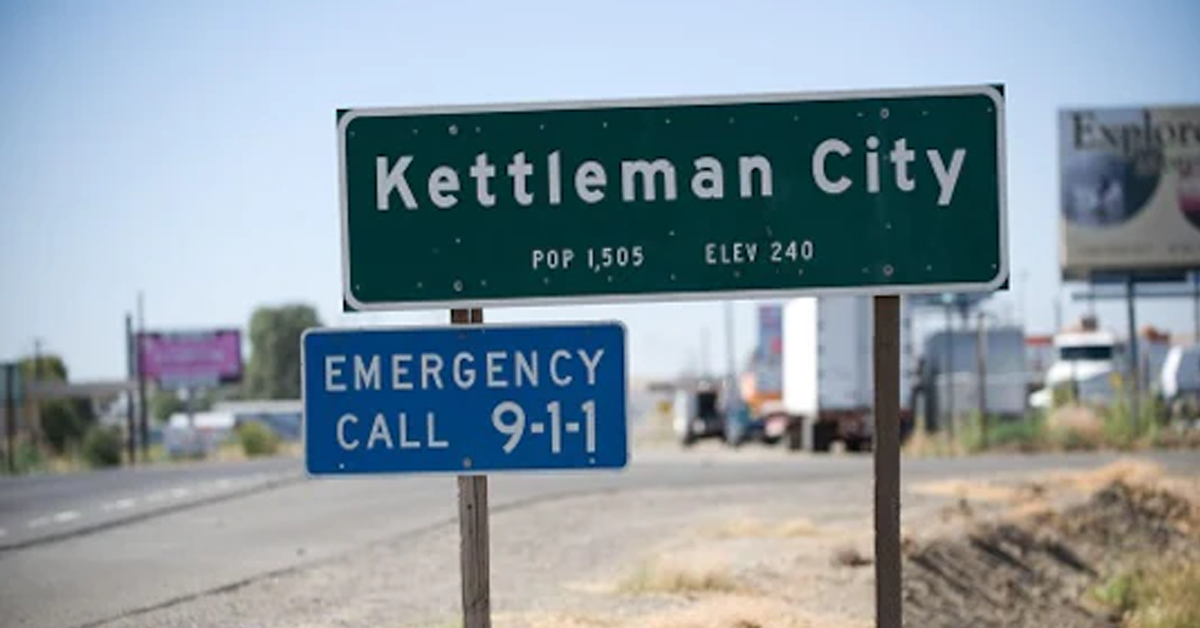While California’s severe drought has hit nearly every corner of the Golden State, it has delivered a crushing toll to communities that received little bounce back following the last drought that peaked seven years ago.
Case-in-point? Kettleman City.
Kettleman, perhaps best known to Californians as a Kings County stopover midway between San Francisco and Los Angeles, serves as the junction of Valley residents traversing to the Central Coast via Highway 41 and metropolitan drivers roaring across Interstate 5.
Beyond a smattering of gas stations, restaurants, and a Tesla-branded charging station-turned-rest stop, the unincorporated town in southern Kings County is home to a hefty population of farmworkers, where nearly 30 percent of residents live under the Federal poverty line.
As if to make matters worse, if the state’s drought posture stays the same, they’ll be out of water by year’s end, their water provider says.
To understand how the town is on the verge of running out of water, it’s important to understand where it comes from.
The route to get water to Kettleman residents and businesses is, admittedly, layered.
Kettleman City CSD, like nearly all of Kings County water users, receives its surface water through California’s State Water Project.
Their supplies arrive courtesy of a water contract between the State of California and Kings County, but is stored and routed by the Tulare Lake Basin Water Storage District.
From there, water is distributed to residences and businesses via Kettleman City CSD’s infrastructure.
Troubling numbers from Sacramento
In late March, the California Department of Water Resources cut water allocations for State Water Project contractors from 10 to 5 percent of their contracted amount.
Unlike water users in the federally-operated Central Valley Project, who pay for the share of water received, State Water Project users are required to pay for their contracted amount of water regardless of the percentage of supplies they receive.
The cost disparity has been a growing bone of contention for farmers – and now communities – who rely on Sacramento-led water supplies.
That concern has redoubled in the wake of the top DWR executive previewing the possibility that there will be a 0 percent allocation of water early next year.
Earlier in the year, Tulare Lake executives first sounded the alarm at the potential of a water shortage in Kettleman City following DWR’s release of tentative charges for water in the 2022 water year, which began Oct. 1.
“Their water charges for 2022 will increase by $25 million over this year. This is a 13% to 18% increase for these contractors in a single year,” the letter reads, noting that if allocations hold at 5 percent, water users will pay an “untenable water cost of nearly $3,000 per acre foot.”
“On top of the crushing financial burden that will result if DWR’s proposal is not suspended, the signatory contractors also must pay for 100 percent of its state water entitlement even though they will receive no more than 5 percent.”
A look at the shortage
Brian Skaggs is a civil engineer with Hanford-based Summers Engineering, the principal engineer for Kettleman City CSD.
In conversation with The Sun, he noted that Kettleman’s state water contract entitles the town to 900 acre feet of water annually.
With 2021’s water year ultimately concluding with a 5 percent allocation, Kettleman residents and businesses saw only 45 acre feet of water flow from the California Aqueduct to the town.
To adequately serve Kettleman, the community requires a minimum of 310 acre feet of water on an annually.
“They got by this year because they had carryover water from previous years,” Skaggs said.
With carryover supplies not likely to last beyond calendar year 2021, Kettleman officials have pressed DWR to grant emergency health and safety water supplies.
“You can request from DWR emergency health and safety water,” Skaggs said, but noted that it is also a narrow supply of water. “But that’s only based on the current population in Kettleman.”
DWR, Skaggs said, utilizes a formula for emergency health and safety supplies. For Kettleman’s population, the city will see a minimum water supply of 55 gallons per person per day sent to the city.
In sum, that equates to eight acre feet per month, or 96 acre feet for 2022, leaving the community with a 214 acre foot shortage for next year with no carryover reserves.
Unlike other urban or suburban settings, the chasm between Kettleman City’s minimum needs of 310 acre feet and the state’s offering of 96 acre feet of health and safety water isn’t being generated by a typical culprit: the all-American residential green lawn.
“Kettleman City doesn’t have much irrigation if you look through that town,” Skaggs said. “[The water] is mostly for the people because there’s minimal landscaping, the commercial businesses use artificial turf to minimize irrigation just to get by.”
“And so we’re in this predicament.”
Skaggs said that Kettleman City’s commercial district, which is relied upon by millions of travelers traversing Interstate 5 and Highway 41 annually, is responsible for 40 percent of the water use in the community with the remaining 60 percent being dedicated for residential use.
Kettleman, Kings Co. officials call on Newsom administration to act
Thursday, Kings County officials filed a formal petition with DWR Director Karla Nemeth requesting the agency eschew its 96 acre foot emergency allotment and grant Kettleman City its minimum needed 310 acre feet of water.
The petition to Nemeth, submitted Thursday by Kings County Chief Administrative Officer Edward Hill, lays out the potential water allotments depending on current and rosier water allocation projections, which breakdown the split between community’s contracted supply and emergency health and safety supply.
It does not, however, contemplate the possibility – as raised by Nemeth herself – of a zero percent water allocation in 2022.
The petition received the backing of Sen. Melissa Hurtado (D–Sanger) and Asm. Rudy Salas (D–Bakersfield) along with the Tulare Lake Basin Water Storage District.
Kettleman City’s congressional representative, Rep. David Valadao (R–Hanford) chimed in on the situation, noting its avoidable nature heading into the current drought.
L
“Central Valley communities are relentlessly seeking ways to work with the Newsom administration to secure drought relief and a reliable source of clean water, but time and time again, they are met with bad news – increased water charges and decreased water allocations,” Valadao said in a statement to The Sun.
“These disadvantaged communities wouldn’t have to be in this situation if California had adequate measures in place, like proper storage to responsibly hold our water when it rains, and a governor who was willing to help. California is more than just the coast, and the Newsom administration should be doing more to help their constituents.”
While the clock ticks and the fate of Kettleman City residents and businesses hangs in the balance of a rejiggering of water supplies from Sacramento, there’s an air of hopelessness that one of the state’s poorest communities is on a collision course to being completely dried up.
“I guess we could put a sign up along the freeway: ‘No water, do not stop.’ But that hurts a lot of businesses,” Skaggs said.











